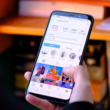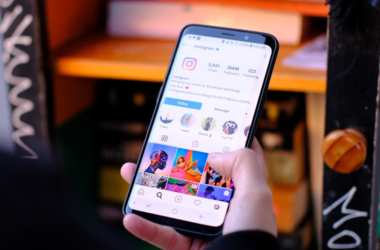This article was originally published in 2023 and was last updated June 16, 2025.
- Tension: AR campaigns promise immersion but often fall flat—overdesigned tech without emotional relevance.
- Noise: The hype around immersive advertising distracts from the deeper need for cultural and psychological resonance.
- Direct Message: The best immersive campaigns aren’t just interactive—they’re emotionally anchored and future-conscious.
See how we separate projection from authenticity in The Direct Message methodology.
Back in late 2023, Honda unveiled the “Wall of Dreams,” a large-scale augmented reality (AR) out-of-home (OOH) campaign that placed interactive murals in Los Angeles shopping centers.
Aimed at promoting its EV lineup and broader sustainability goals, the campaign fused digital innovation with public art to create something both timely and timeless.
Fast forward to June 2025: the Wall of Dreams remains a relevant case study—not just for its technical execution, but because it hinted at a deeper shift in how brands connect with people in public space.
Today, as brands continue exploring AR with new tools and more personalized experiences, Honda’s approach reminds us that storytelling, not just spectacle, drives long-term impact.
Let’s revisit what made the “Wall of Dreams” stand out and what it reveals about the evolution of marketing in an age of attention scarcity and environmental urgency.
What it is—and why it worked
The Wall of Dreams debuted over Black Friday weekend 2023 at The Grove in Los Angeles, later moving to The Americana in Glendale.
Featuring artwork by Paul Shipper and powered by “sky segmentation” AR technology, the campaign allowed shoppers to scan a QR code and unlock interactive visuals overlaying the real world via their smartphones.
Users could explore electric vehicles like the 2024 Honda Prologue SUV and the brand’s futuristic eVTOL aircraft while also learning about Honda’s pledge for net-zero carbon emissions by 2050.
But this wasn’t just a tech demo—it was layered, purposeful marketing.
The murals blended sustainability messaging, futuristic vehicle innovation, and creative expression into a single consumer experience.
They didn’t just show you a car. They offered a glimpse of a world where mobility and sustainability coexisted, and invited you to step into that vision.
Consumers are more likely to engage with brands that present a multi-sensory or immersive experiences rooted in a larger purpose.
Honda’s campaign tapped directly into this evolving consumer expectation.
The deeper tension behind immersive campaigns
The promise of AR in marketing is often oversimplified: make it cool, make it clickable, make it viral. But beneath that surface-level allure is a growing consumer fatigue.
People don’t just want to be dazzled, they want to be seen.
Immersive marketing has to move past novelty to address something deeper: emotional relevance, cultural awareness, and ethical stakes.
In a time marked by climate anxiety, economic precarity, and tech burnout, brands must do more than entertain. They must align their stories with shared futures.
Honda’s Wall of Dreams did just that. By linking electric mobility with planetary sustainability in a public, accessible way, it gave passersby something to believe in—not just something to click on.
And the setting mattered. Placing the murals in high-traffic malls during the holiday season wasn’t just strategic—it was symbolic.
Amid consumerism’s peak moment, Honda asked: What if your next car wasn’t just a purchase, but a vote for a better planet?
What gets in the way: Noise disguised as innovation
The AR marketing landscape is noisy—and not in a good way. Everyone wants to go viral with “the next big activation.” But many campaigns confuse technical polish with emotional impact.
The pressure to innovate leads to “tech-for-tech’s-sake” installations that might trend on TikTok but fade from memory.
In 2024, branded AR campaigns failed to sustain engagement beyond initial impressions. Why? Because novelty without narrative doesn’t stick.
Even worse, some brands overpromise what AR can deliver. Instead of enhancing reality, they clutter it. Consumers are left confused, not inspired.
Honda avoided that trap by anchoring their experience in a clear narrative—mobility meets sustainability—and by ensuring it worked seamlessly on familiar devices.
The Direct Message
Immersive campaigns don’t succeed because they use AR—they succeed when they tap into emotional urgency and shared vision.
Integrating this insight: Immersion as invitation, not imposition
As we move deeper into an era of ambient computing, spatial experiences, and AI-personalized content, the future of marketing isn’t about pushing more—it’s about connecting better.
The Wall of Dreams offers a playbook:
- Tell a bigger story. Honda didn’t just promote a product; they promoted a purpose. Marketers should ask: What future are we inviting our audience into?
- Make tech invisible. Great AR feels like magic—not because it’s complex, but because it flows. The use of “sky segmentation” here was elegant, not intrusive.
- Use public space wisely. By placing the murals in high-footfall retail locations, Honda tapped into an emotional moment—holiday shopping—and reoriented it toward sustainability.
Importantly, they also humanized the tech. On-site brand reps didn’t just hand out free swag—they helped people engage meaningfully.
The blend of digital interaction with real-world support turned a passive ad into a conversation.
In the words of neuroscientist Antonio Damasio, “We are not thinking machines that feel; we are feeling machines that think”.
AR can only succeed when it resonates emotionally first and technically second.
A new kind of public storytelling
Two years after its debut, Honda’s Wall of Dreams still represents more than a marketing activation—it reflects a growing understanding that immersive experiences must earn our attention by offering clarity, not clutter.
For marketers in 2025 and beyond, the goal isn’t to win eyeballs. It’s to win trust, spark imagination, and communicate values in the environments where people live, shop, and feel.
And sometimes, all it takes to start that shift is a wall—one painted with dreams, powered by purpose, and made for the public.






